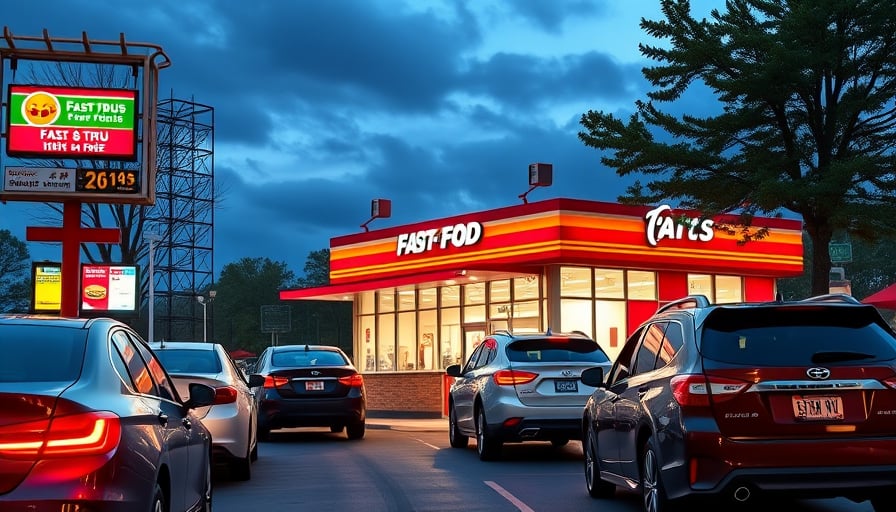McDonald’s Third‑Quarter Performance Signals Broader Consumer Trends
McDonald’s Corp. (MCD) reported a third‑quarter revenue increase that surpassed market expectations, driven largely by a lift in same‑store sales across its U.S. portfolio. The uptick in performance translated into a modest rise in early trading, positioning the stock among the strongest performers in that day’s Dow Jones Industrial Average.
While the earnings announcement underscored the company’s continued ability to generate robust free‑cash‑flow margins, management cautioned that traffic from lower‑income customers remains in decline—a trend that reflects deeper shifts in U.S. consumer spending patterns. Analysts have noted that, despite the positive quarterly outlook, MCD may be undervalued relative to its earnings potential, suggesting that market participants have yet to fully price in the firm’s operational resilience.
Digital Transformation Meets Physical Retail
McDonald’s has long balanced its global brand with localized store experience, yet the past year has accelerated its digital strategy. The rollout of contactless ordering kiosks, a refined mobile‑app ecosystem, and dynamic menu pricing models has helped offset foot‑traffic deficits among price‑sensitive demographics. By integrating digital convenience with the immediacy of in‑store service, the chain capitalizes on the “digital‑physical hybrid” model that increasingly defines consumer expectations.
This synergy offers a clear business opportunity: as consumers grow more comfortable with online ordering yet still value the tangible experience of a quick‑serve outlet, companies that can fluidly integrate both realms stand to capture higher spend per visit. McDonald’s digital platforms also generate granular data on purchase behavior, enabling tailored promotions that resonate with specific customer segments—an advantage that rivals with less sophisticated technology stacks may struggle to match.
Generational Spending Patterns and Lifestyle Shifts
The firm’s quarterly results illustrate a divergent reality across generational cohorts. While younger consumers—particularly Gen Z and Millennials—continue to gravitate toward value‑driven, tech‑enabled quick‑service dining, older demographics retain a steadier baseline of in‑store visits. The decline in traffic from lower‑income households signals a narrowing of the traditional fast‑food customer base, yet it also points to a pivot toward new lifestyle priorities such as health consciousness and experiential dining.
McDonald’s is responding to these shifts with menu diversification, introducing plant‑based options and premium “McCafé” offerings that appeal to an increasingly wellness‑oriented market. By aligning its product mix with contemporary lifestyle trends, the company can re‑engage price‑sensitive customers who seek both affordability and perceived quality—a strategic niche that merges cost consciousness with aspirational consumption.
Evolution of Consumer Experience
The consumer experience at fast‑food restaurants is evolving beyond mere food delivery. Personalization, speed, and brand authenticity have become paramount. McDonald’s is testing AI‑driven menu recommendations and loyalty‑program integrations that reward repeat visits, thereby deepening customer engagement. The company’s investment in experiential branding—such as in‑store pop‑up events and community‑centered initiatives—reinforces its positioning as a social hub rather than a mere transactional outlet.
From a corporate‑news perspective, the convergence of these factors—digital transformation, generational spending, and experiential evolution—creates a multi‑dimensional growth engine. Investors who recognize that McDonald’s is not only a fast‑food leader but also a pioneer in blending technology, demographics, and culture, may view the current share price as undervalued relative to its future earnings potential.
Forward‑Looking Outlook
- Digital‑Physical Integration: Continued expansion of mobile ordering and curb‑side pickup is likely to sustain or grow same‑store sales, especially among lower‑income segments that favor convenience over in‑store dining.
- Health‑and‑Wellness Positioning: Menu innovation that aligns with health trends can attract Millennials and Gen Z, offsetting declines in traditional traffic.
- Data‑Driven Personalization: Leveraging customer data to drive targeted marketing and dynamic pricing will enhance customer lifetime value.
- Global Expansion: Emerging markets with rising disposable incomes present opportunities to replicate successful domestic digital‑physical models, diversifying revenue streams.
In sum, McDonald’s current financial health and strategic initiatives position it well to navigate the evolving consumer landscape. The company’s ability to fuse digital convenience with an engaging physical experience, while adapting to shifting generational preferences, suggests sustained upside for stakeholders who recognize these underlying market dynamics.
